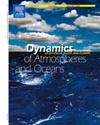Vertical Distribution, Community and Population Structures of the Planktonic Chaetognatha in the Western Subarctic Pacific: Insights on the Eukrohnia Species Group
IF 1.9
4区 地球科学
Q2 GEOCHEMISTRY & GEOPHYSICS
引用次数: 0
Abstract
In the oceans, Chaetognatha can contribute significantly to the total zooplankton biomass (up to 10–30%). The genus Eukrohnia, the dominant Chaetognath genus in the western subarctic Pacific, includes E. hamata and E. bathypelagica. Although it has been pointed out that there is no genetic difference between the two species, no study has been made that treats them as the same species group. In this study, we investigated vertical distribution based on the eight vertical stratification samplings down to 1000 m depths conducted day/night at four seasons covering one year, community structure, and population structure of the three dominant Chaetognath species: Parasagitta elegans, E. hamata, and E. bathypelagica in the western subarctic Pacific. The population densities of each species at 0–1000 m water column were 0.04–0.36 ind. m−3 for P. elegans, 0.14–1.60 ind. m−3 for E. hamata, 0.24–1.54 ind. m−3 for E. bathypelagica, and 1.37–2.62 ind. m−3 for Eukrohnia juveniles. The vertical distributions were consistent both day and night, and no diel changes were observed for all species throughout the seasons. The vertical distribution of Chaetognaths evaluated by the distribution center was 61–169 m for P. elegans, 143–206 m for Eukrohnia juveniles, 134–279 m for E. hamata, and 253–612 m for E. bathypelagica. The body length of P. elegans ranged from 4 to 34 mm, and one to three cohorts were identified at each sampling occasion. While the presence of the eight stages has been reported for Eukrohnia, only one to five stages occurred, and specimens belonging to six to eight stages were not observed in the samples throughout the year. The body length of the whole Eukrohnia species ranged from 2 to 14 mm. The body length histograms of the Eukrohnia species group, including E. hamata and E. bathypelagica, and their juveniles showed the presence of two to four cohorts at each sampling date. Within the Eukrohnia species group, vertical changes in body length were present, which were characterized by the smaller specimens occurring at shallower depths, followed by an increase in body length with increasing depths. From the vertical distribution and population structure of the Eukrohnia species group (Eukrohnia juvenile + E. hamata + E. bathypelagica) in this study, there was no difficulty in treating them as one species. It may suggest that E. hamata and E. bathypelagica in the western subarctic Pacific could be treated as one species group. To clarify this point, a detailed genetic analysis of the Eukrohnia species group will be needed for future studies.亚北极太平洋西部浮游毛颌动物的垂直分布、群落和种群结构:关于Eukrohnia物种群的认识
在海洋中,毛颌类对浮游动物生物量的贡献很大(可达10-30%)。Eukrohnia属是亚北极太平洋西部主要的毛齿纲属,包括E. hamata和E. bathypelagica。尽管有人指出这两个物种之间没有遗传差异,但没有研究将它们视为同一物种群。本文对亚北极太平洋西部地区毛纲优势种elegans、E. hamata和E. bathypelagica的垂直分布、群落结构和种群结构进行了研究。各物种在0 ~ 1000 m水柱上的种群密度分别为:秀丽隐杆线虫0.04 ~ 0.36个inm−3,哈玛塔姬鼠0.14 ~ 1.60个inm−3,深海姬鼠0.24 ~ 1.54个inm−3,幼蛛1.37 ~ 2.62个inm−3。白天和夜间的垂直分布基本一致,各树种在不同季节均无昼夜变化。分布中心评价的毛齿纲垂直分布范围为:秀丽隐杆线虫61 ~ 169 m,幼体真齿线虫143 ~ 206 m,哈玛塔线虫134 ~ 279 m,深海巨齿线虫253 ~ 612 m。线虫体长在4 ~ 34 mm之间,每次采样均可发现1 ~ 3个群体。虽然有报道称真核属存在8个阶段,但只出现了1至5个阶段,而且全年在样本中没有观察到属于6至8个阶段的标本。整个真齿鱼种的体长在2 ~ 14毫米之间。在每个采样日期,包括hamata和bathypelagica在内的Eukrohnia物种群及其幼体的体长直方图显示存在2至4个队列。Eukrohnia种群体长呈垂直变化,在较浅的深度出现较小的标本,随后随着深度的增加体长增加。从本研究中真鲷种群(幼年真鲷+哈马真鲷+深叶真鲷)的垂直分布和种群结构来看,将它们作为一个物种处理是没有困难的。这可能表明亚北极太平洋西部的hamata E.和bathypelagica E.可以被视为一个物种群。为了澄清这一点,需要对真齿属物种群进行详细的遗传分析,以供今后的研究。
本文章由计算机程序翻译,如有差异,请以英文原文为准。
求助全文
约1分钟内获得全文
求助全文
来源期刊

Dynamics of Atmospheres and Oceans
地学-地球化学与地球物理
CiteScore
3.10
自引率
5.90%
发文量
43
审稿时长
>12 weeks
期刊介绍:
Dynamics of Atmospheres and Oceans is an international journal for research related to the dynamical and physical processes governing atmospheres, oceans and climate.
Authors are invited to submit articles, short contributions or scholarly reviews in the following areas:
•Dynamic meteorology
•Physical oceanography
•Geophysical fluid dynamics
•Climate variability and climate change
•Atmosphere-ocean-biosphere-cryosphere interactions
•Prediction and predictability
•Scale interactions
Papers of theoretical, computational, experimental and observational investigations are invited, particularly those that explore the fundamental nature - or bring together the interdisciplinary and multidisciplinary aspects - of dynamical and physical processes at all scales. Papers that explore air-sea interactions and the coupling between atmospheres, oceans, and other components of the climate system are particularly welcome.
 求助内容:
求助内容: 应助结果提醒方式:
应助结果提醒方式:


